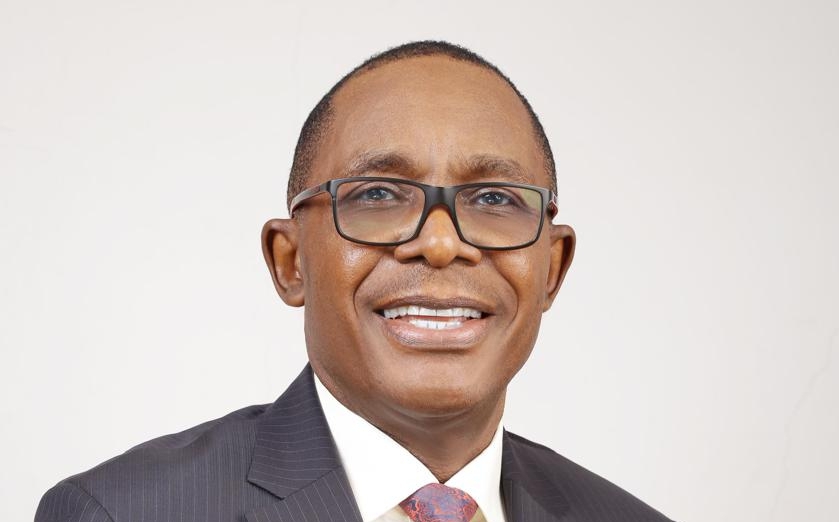
Capital requirements are intended to restrain the risk appetite of banks, prevent their possible collapse in the event of market turmoil, save employees’ jobs and ultimately safeguard depositors’ funds and taxpayers’ bailouts. But it is not an uneasy phrase in the club of top bankers,
GEOFF IYATSE writes.
During a congressional hearing last month, Senator Elizabeth Warren accused the Chair of the United States Federal Reserve, Jerome Powell: “When the heat was on last year, you talked a lot about getting tougher on the banks. Now, the giant banks are unhappy about that, and you have gone weak-kneed.”
She accused Powell of backpedaling on his earlier commitment to strengthen capital rules for big banks in the wake of last year’s collapse of First Republic, Silicon Valley, (SVB) and Signature Bank collapses of last year — the second, third and fourth largest bank failures in the U.S. She reminded the chief regulator of his previous commitments in 2023 to learn banking crisis and support recommendations, including strengthening rules for big banks to create a more resilient financial system, stressing that “American people need a leader at the Fed who dares to stand up to these banks and protect our financial system”.
The 2023 bankruptcy reactivated the call for a reset of financial risk assessment rules in the U.S. with a special focus on the global systemically important bank (G-SIB). The special attention on the G-SIB is not out of place. Their failure, going by their sheer wide business could trigger a contagion and result in a systemic crisis.
For the umpteenth time, the United States reactivated Basel III, which was slowed down by the COVID-19 epidemic, and retooled into what has been christened Basel III Endgame. Founded in 1974, the Basel Committee on Banking Supervision (BCBS) set out to improve global financial stability and reduce credit risks with a set of rules on capital adequacy.
In general terms, Basel III focused on addressing its shortcomings by placing a greater focus on going-concern loss-absorbing capital, increasing capital requirements to ensure that banks can withstand losses in times of stress and recalibrating risk-weighted capital framework and adding macroprudential elements to the regulatory framework. It also seeks the introduction of capital buffers that can be drawn down in times of stress to limit pro-cyclicality and capital buffers to address the externalities created by systemically important banks (SIBs).
The latest Basel also stipulates a minimum leverage ratio requirement to constrain excess to complement the risk-weighted capital requirements and introduces an international framework for mitigating excessive liquidity risk through the liquidity coverage ratio (LCR) and net stable funding ratio (NSFR).
Most importantly, Basel III includes additional requirements for the SIBs or those financial institutions that are considered “too big to fail” learning from the failure of Lehman Brothers in 2008.
The U.S., a country troubled by excessive bank failures, has taken Basel III doctrines some steps further. The new rules would apply to 37 of the nation’s 4,500 banks – only banks that have $100 billion or more in assets, with a stringent to contain excessive risks, credit decisions and investment strategies.
The overall philosophy of the new requirement, which aligns the U.S. banking supervision with Basel III requirement, is risk-based capital. It recognises that different loans and investments carry different degrees of risk, which suggests that banks should hold more capital against riskier assets. This, of course, further invalidates the redundant “one-size-fits-all” capital requirement that fails to distinguish between safe and risky activities.
Across sectors and jurisdictions, capital rules are like insurance for business operations. They make businesses safer, employers more secure and depositors’ funds safer (in the case of banks). Overall, they reduce systemic risks and the social burden of bankruptcy.
However, higher capital requirements increase the costs of doing business for investors and reduce profitability. So, high stringent capital requirements are seen as unnecessary insurance burdens by bankers whether in Nigeria or elsewhere.
In the case of the U.S., fearmongering reached the roof in the past months. Bank lobbyists and executives have written op-eds and delivered testimonies criticising Basel III whereas capital and liquidity rules are set up to do the opposite of what they claim – make the financial system safer and safeguard taxpayer bailouts.
With the new capital adequacy rules, the rhetoric has started. The categorisation of the banks into regional, national and international operators, of course, still lags in what is required for a comprehensive risk-based capital requirement stipulation. But it is a fair start that the banks are not allowed to continue with mega businesses with inconsequentially low insurance (capital) against their risks.
While prudential guidelines, such as liquidity, cash reserve and leverage ratios are expected to be realigned with changing business environments from time to time, there is no doubt the banks are grossly under-capitalised in relative to their asset growth and increase in the risk environment.
Access Bank, for instance (being the biggest Nigerian bank by asset size its reference is apt), sits on a total asset of 16.83 trillion with a total equity of N1.2 trillion, bringing the equity to asset ratio to 7.12 per cent. But the Central Bank of Nigeria (CBN), in its new capital treatment is not considering retained earnings, which form a bulk of this, as part of the minimum requirement.
The two categories of equities in consideration (paid-up capital and share premium) totalled NN251.8 billion at the end of Q3 of last year, meaning that banks’ trading capital to total asset ratio is 1.5 per cent. The ratio of capital to deposit ratio, which is a key consideration when considering solvency and liquidation issues, was 1.98 per cent as of last year.
Considering that most bank failures are triggered by non-performing loans (NPL), Basel III has pegged attention to capital adequacy ratio (CAR), which pegs at a minimum of eight per cent for tier-one banks. However, there is a discrepancy between Basel III’s approach to CAR computation and CBN’s treatment. The former takes CAR as the summation of tier-one (shareholders’ equity and retained earnings) plus tier-two capital divided by the risk-weighted assets, given that loans to private entities carrying premium risk while government advances are treated as risk-free assets.
But going by CBN’s Guidelines on Regulatory Capital issued in 2021, CAR is computed strictly with total regulatory capital (TRC) given total risk-weighted assets. While the Central Bank is expected to provide more clarification on how retained earnings (which comes from often questionable profits) in the future, perhaps, TRC is currently restricted to paid-up capital and share premium.
Following this template, CAR of most Nigerian banks is a far cry from even Basel I requirements. More information is required to know the current CAR of the banks. This will require delineating their assets and looking at the risk level of each of the assets.
The relationship of loans to the private sector, which carry the weightiest risks in the balance sheets of most banks, and their current TRC, says much about how far the industry is from what is considered an adequate minimum capital.
For the biggest Nigerian bank, TRC to total loan/advance ratio is currently 5.3 per cent. The figure is much lower exposure to mortgage and other investments. This is about the same picture across the other top five SIBs – First Bank of Nigeria, Guaranty Trust Bank, United Bank for Africa and Zenith Bank.
For FirstBank (with its parent company sitting on N248.19 billion paid-up capital and share premium), TRC to loan/advance is four per cent while that of Zenith, which has the second highest TRC at N270.8 billion beside Ecobank Nigeria, TRC to loan/advance ratio is 5.2 per cent with its total loans and advances at the close of Q3 last year standing at N5.22 trillion.
A groundswell of media campaigns is building ahead of the capitalisation, which will be completed in two years. With retained earnings, as argued by some groups making a case for the inclusion, most of the banks would surpass the new minimum total regulatory capital, indeed. The Central Bank, for unknown reasons, treats retained earnings as non-eligible.
Globally, books of financial institutions are read with suspicion, which sort of confers omniscient status on the regulators, who apart from checking the books, exercise routine supervision over the operators and have the benefits of knowing their real-time health status. This position makes a significant material difference, especially since the financial statements on millions of depositors and other stakeholders base their decisions are largely a collation of backward-looking data.
In any case, if declared profits raise eyebrows, as they did in the past, how do retained earnings then pass an integrity test? Yet, equity is as important as the banks themselves. Hopefully, the regulatory institution will, in the coming months, disclose more information about its decision to disqualify it from the eligible regulatory capital.
But that aspect of the debate is not as important as the big picture – banks anywhere cannot afford to gamble with public trust and resources. At another level, there are questions on the sufficiency of the maximum insurance deposit, which is pegged at N500,000 even though the Nigerian Deposit Insurance Corporation (NDIC) has argued otherwise, stressing that nearly 100 per cent of the depositors do not keep more than the amounts with banks.
There are already subtle protests from the unions and other interest groups to the effect that the exercise would cost the country more jobs. Association of Senior Staff of Banks, Insurance and Financial Institutions (ASSBIFI), for one, said over 12,000 jobs were lost to 2005 and 2010 consolidation in the industry. But what many have not remembered is that failed banks do not only cost jobs. They could be buried with much more, including economies.
With a minimum required capital of N25 billion, there is no doubt the banks have been given licences to overtrade. And the majority have, indeed, overleveraged their equities. In the era of “too big to fail”, taxpayers’ money may not be that fortunate if depositors’ funds are saved in days of crises.
In the face of the emerging campaign of calumny, one only hopes that the CBN Governor, Yemi Cardoso, unlike Powel, remembers that he is neither accountable to the bank chiefs, who benefit in jumbo executive allowances when the goings are good, nor paid lobbyists in the corridor of power but to Nigerians whose taxes are often used to bail out reckless lenders. The recapitalisation should be the beginning of what he must do for banks to provide an adequate buffer for the risks they take.






